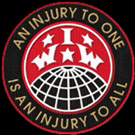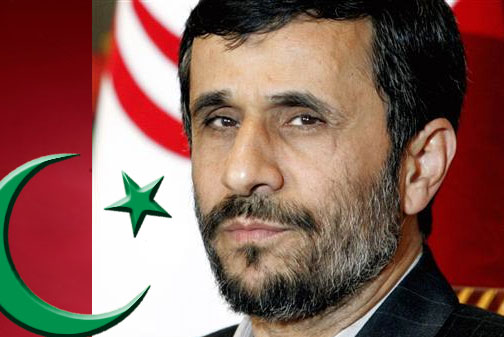The Iranian regime has crossed the Rubicon in its reaction to nonviolent protest and citizen dissent and is currently executing a slow-motion coup d’état which may usher in a new leadership dedicated to exercising the totalitarian power of the state.
In spite of the role played by connectivity in reporting the abuses of power and the violent repression of its citizens, the West seems unable to exercise any meaningful influence on the perpetrators of murderous violence. Opposing them merely exacerbates the propaganda of the autocratic authors of this repression. Web-based repositories hosted in the US and the world at large have become targets of the Iranian security establishment seeking to identify individuals who have opposed the state, a matter of arguably life-threatening urgency for those involved. If they want to act like a military junta then they should be treated as such. They clearly are using the Western infrastructure of the Internet for their own doubtful, and internationally criminal, purposes.
Cut Off the Internet
 From the network map illustrated it appears, as confirmed by RIS database searches, that the primary Internet provider in Iran, DCI Autonomous Systems, owned and operated by the state and the source of all filtering and censorship, has worldwide connectivity through six transit providers, Turk Telecom (TTNet, AS9121), FLAG (AS15412), Singapore Telecom (AS7473), PCCW (AS3491), Telia (AS1299), and Telecom Italia Sparkle (AS6762). The regime itself blocked access to five out of six of these providers as part of their premeditated communications blackout on the eve of the announcement of the election results, as shown. The connectivity through TTnet at the time may have been an oversight. This demonstrates the ease with which a total Internet blackout can be accomplished either overtly or covertly on either side of the Internet Exchange Point.
From the network map illustrated it appears, as confirmed by RIS database searches, that the primary Internet provider in Iran, DCI Autonomous Systems, owned and operated by the state and the source of all filtering and censorship, has worldwide connectivity through six transit providers, Turk Telecom (TTNet, AS9121), FLAG (AS15412), Singapore Telecom (AS7473), PCCW (AS3491), Telia (AS1299), and Telecom Italia Sparkle (AS6762). The regime itself blocked access to five out of six of these providers as part of their premeditated communications blackout on the eve of the announcement of the election results, as shown. The connectivity through TTnet at the time may have been an oversight. This demonstrates the ease with which a total Internet blackout can be accomplished either overtly or covertly on either side of the Internet Exchange Point.
If they seek to use the Internet as cultural candy for their population, to be dialed up, down or off at will, it seems that our infrastructure is being used by the regime to relieve a tension which they are incapable and unwilling to manage themselves. There is also the issue of the economic impact of such a blockade, which would render the economic sanctions the UN seems unwilling to impose irrelevant by interdicting the normal flow of inbound and outbound business related traffic. The Internet is a development of the enlightened and pluralistic culture which the Iranian leadership has consistently defined as their ideological enemy. One wonders why they should be permitted to utilise it for their own totalitarian purposes, both domestically and internationally.
It’s interesting to note that in spite of legality issues regarding cyber-warfare there seem to be no international conventions regarding the manipulation of routing information and BGP (Border Gateway Protocol) database management. This is evidenced by recent incidents:
In early 2008, at least eight US Universities had their traffic diverted to Indonesia for about 90 minutes one morning in an attack kept mostly quiet by those involved. Also, in February 2008, a large portion of YouTube’s address space was redirected to Pakistan when the PTA decided to block access to the site from inside the country, but accidentally blackholed the route in the global BGP table.
BGP hijacking and transit-AS problems Wikipedia
 Obviously this would also restrict international access to PressTV, IRNA and IRIB websites hosted domestically in Iran, thereby cutting off the flow of regime propaganda to the rest of the world. Shucks.
Obviously this would also restrict international access to PressTV, IRNA and IRIB websites hosted domestically in Iran, thereby cutting off the flow of regime propaganda to the rest of the world. Shucks.
Whether this is something which could or should be done formally or covertly, either by international convention, unilateral action or at a grass-roots level along the lines of the DDoS attacks on Iran in recent weeks is an open question. But it’s fair to say that international law is several decades behind the technology at this point, creating an opportunity for direct action. Whether this is done uniformly, sporadically or as a sequence of ‘rolling blackouts’ in response to Iranian intransigence and behaviour are all options to be considered. It’s times like these when one wishes that in a parallel universe there was an IWW local worldwide of Internet traffic engineers, network administrators and security professionals willing to embark on such an activity.
 The Medicare+5 public option is apparently eight votes short of passage in the house according to Representative Raul Grijalva (D-AZ):
The Medicare+5 public option is apparently eight votes short of passage in the house according to Representative Raul Grijalva (D-AZ):
 From the network map illustrated it appears, as confirmed by RIS database searches, that the primary Internet provider in Iran, DCI Autonomous Systems, owned and operated by the state and the source of all filtering and censorship, has worldwide connectivity through six transit providers, Turk Telecom (TTNet, AS9121), FLAG (AS15412), Singapore Telecom (AS7473), PCCW (AS3491), Telia (AS1299), and Telecom Italia Sparkle (AS6762). The regime itself
From the network map illustrated it appears, as confirmed by RIS database searches, that the primary Internet provider in Iran, DCI Autonomous Systems, owned and operated by the state and the source of all filtering and censorship, has worldwide connectivity through six transit providers, Turk Telecom (TTNet, AS9121), FLAG (AS15412), Singapore Telecom (AS7473), PCCW (AS3491), Telia (AS1299), and Telecom Italia Sparkle (AS6762). The regime itself  Obviously this would also restrict international access to PressTV, IRNA and IRIB websites hosted domestically in Iran, thereby cutting off the flow of regime propaganda to the rest of the world. Shucks.
Obviously this would also restrict international access to PressTV, IRNA and IRIB websites hosted domestically in Iran, thereby cutting off the flow of regime propaganda to the rest of the world. Shucks.
 The pending election in Iran, far more than just a personality quest between Ahmadinejad and Mousavi, is a sign of potentially serious ructions in the ruling oligarchy:
The pending election in Iran, far more than just a personality quest between Ahmadinejad and Mousavi, is a sign of potentially serious ructions in the ruling oligarchy: